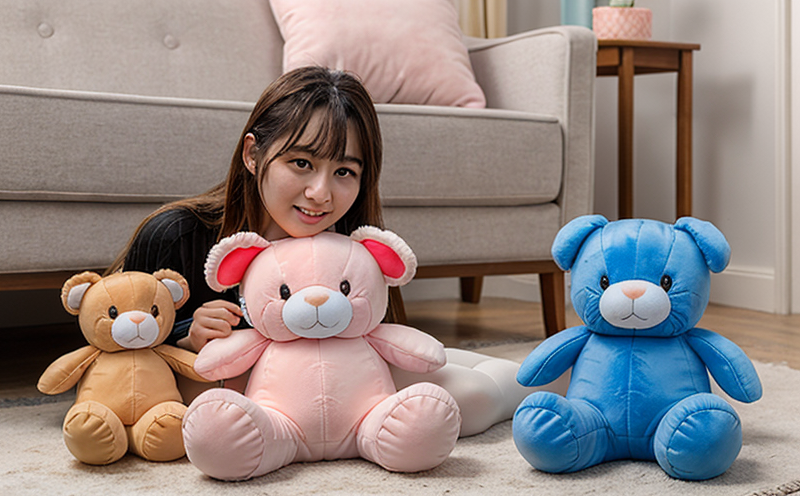CPSIA Labeling and Compliance for Stuffed Toys
The Consumer Product Safety Improvement Act (CPSIA) of 2008 introduced stringent regulations aimed at enhancing the safety of toys sold in the United States. Specifically, CPSIA mandates that all stuffed toys undergo rigorous testing to ensure compliance with labeling requirements and safety standards. This service ensures your stuffed and plush toys meet these regulatory demands.
The CPSIA's Title I establishes a strict lead content limit for children’s products, including stuffed toys, which must not exceed 100 parts per million (ppm) of lead in paint or surface coatings. Additionally, the act requires that all toys be labeled with a warning statement if they contain chemicals such as phthalates or are intended for use by children under the age of three.
The CPSIA also includes provisions to ensure that toys comply with flammability standards and do not contain hazardous materials. These regulations apply to both domestic and imported products, ensuring a level playing field in the toy industry.
In practice, this means that your stuffed toys need to be tested for lead content, phthalates, flammability, and overall safety. The testing process involves sampling the toy, preparing it according to specific protocols, analyzing the samples using advanced instrumentation such as X-ray fluorescence (XRF) spectrometers or inductively coupled plasma mass spectrometry (ICP-MS), and generating a detailed report that certifies compliance.
Compliance with CPSIA is crucial for several reasons. Non-compliance can lead to product recalls, legal action, and damage to your brand's reputation. Moreover, failure to adhere to these regulations can result in fines and penalties from regulatory bodies like the Consumer Product Safety Commission (CPSC).
The testing process typically involves multiple steps, including initial inspection of the toy’s materials, preparation of samples for analysis, and detailed examination using specialized equipment. The results are then compiled into a comprehensive report that outlines any non-compliance issues and provides recommendations for rectification.
Our laboratory adheres to international standards such as ASTM F963-17 and EN 71-1:2019, which guide the testing procedures for stuffed toys. These standards ensure that our tests are consistent with industry best practices and regulatory requirements.
Scope and Methodology
| Test Parameter | Description |
|---|---|
| Lead Content in Paint/Surface Coatings | Testing is conducted using X-ray fluorescence (XRF) spectrometry to ensure the lead content does not exceed 100 ppm. |
| Flammability | The toy is subjected to flammability tests to ensure it meets the requirements outlined in ASTM F1958-23 and EN 71-6:2019. |
| Phthalates Content | Analyze for phthalate content using gas chromatography-mass spectrometry (GC-MS) to ensure compliance with CPSIA’s restrictions on these chemicals. |
| Safety Evaluation | Perform a comprehensive safety evaluation of the toy, including mechanical and durability tests as per ASTM F963-17 and EN 71-2:2019. |
The methodology for CPSIA compliance testing involves several key steps. Initially, we conduct an inspection to ensure that the toy meets basic safety requirements. If these are met, we then proceed with sample preparation, which may involve cutting or other processes depending on the test parameters. Once prepared, the samples are analyzed using the appropriate instrumentation.
For lead content testing, XRF spectrometers provide precise measurements of the metallic elements present in the toy’s materials. Gas chromatography-mass spectrometry (GC-MS) is used to identify and quantify phthalates within the toy. Mechanical durability tests assess the strength and resilience of the stuffed material, ensuring it can withstand typical use without breaking down or releasing harmful substances.
The results from these tests are then compiled into a detailed report that provides a comprehensive overview of the toy’s compliance status. This includes any areas where non-compliance was detected, along with recommendations for addressing these issues. The report is designed to be clear and actionable, helping you make informed decisions about your product development and sourcing processes.
Why Choose This Test
- Comprehensive Compliance Assurance: Our CPSIA labeling and compliance tests ensure that all aspects of the toy meet strict regulatory standards, reducing the risk of non-compliance.
- Expertise in Regulatory Standards: We adhere to international standards such as ASTM F963-17 and EN 71-2:2019, ensuring our tests are consistent with industry best practices.
- Rigorous Testing Procedures: Our laboratory uses advanced instrumentation like XRF spectrometers and GC-MS to provide accurate and reliable test results.
- Transparent Reporting: We provide detailed reports that outline any non-compliance issues, along with recommendations for rectification. This transparency ensures you have all the information needed to make informed decisions.
- Safety Evaluation: Our tests go beyond CPSIA requirements by including a comprehensive safety evaluation of the toy’s materials and construction.
- Regulatory Compliance: By ensuring compliance with CPSIA, we help protect your brand from potential legal issues and product recalls.
Choosing this test ensures that you are not only meeting regulatory requirements but also providing a safe and compliant product to consumers. This can enhance consumer trust and protect your reputation in the market.
Customer Impact and Satisfaction
The CPSIA labeling and compliance testing service is designed to have a significant impact on our customers by ensuring they meet all relevant regulatory requirements. By choosing this service, toy manufacturers can avoid the costly and time-consuming process of dealing with non-compliance issues after products reach the market.
Our comprehensive approach ensures that any potential problems are identified early in the development process, allowing for timely corrections before production begins. This not only saves money but also enhances product quality and safety.
Clients benefit from our expertise in regulatory compliance, which helps them stay ahead of changing regulations. By working closely with us during the design and manufacturing stages, customers can ensure that their products meet all necessary standards, thereby reducing the risk of recalls and legal action.
Our service also offers peace of mind to clients by providing detailed reports that outline any non-compliance issues and offer recommendations for rectification. This transparency ensures that clients have all the information needed to make informed decisions about their product development processes.





